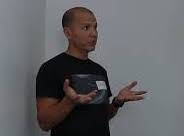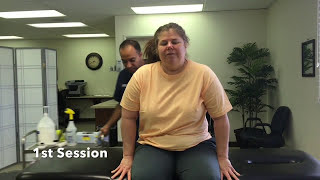Osteopathic Manipulative Therapy CPT Codes
Osteopathic Manipulative Therapy CPT Codes
Owing to the side effects associated with conventional medical and surgical treatments, a significant percentage of the global population is inclined towards an alternative form of treatment. Osteopathic manipulative therapy is a form of alternative medicine that applies a holistic approach to achieve mental, physical, and spiritual wellbeing in an individual. Somatic dysfunction is referred to the impairment of muscles, joints, bones, myofascial structures, and the associated neurovasculature. Osteopathic manipulative therapy involves the assessment of musculoskeletal disorders via palpation, followed by hands-on manipulation of the components of the musculoskeletal system in order to treat the somatic dysfunction. This therapy improves the limited range of movement and alleviates pain and tenderness in the somatic dysfunction. [1]
CPT Codes and Osteopathic Manipulative Therapy
CPT codes refer to the Current Procedural Terminology codes, which are used to report services offered and procedures performed by qualified healthcare providers, including the doctors of osteopathic medicine. CPT is a list of codes composed of numbers and alphabets and is an integral part of level I of the HCPCS (Healthcare Common Procedure Coding System). CPT codes are the preferable mode of reporting healthcare procedures in the Centers for Medicare and Medicaid Services (CMS), the federal healthcare program.
CPT codes are classified into three categories based on the procedures they represent. The categories of CPT codes are listed below.
Category I CPT Codes
This category includes the codes which represent the U.S. Food and Drug Administration–approved procedures and services. These procedures are commonly practiced by healthcare providers. The CPT codes in this category are released once per year and are composed of five numerals. For instance, the CPT code of category I, 29580, refers to the post-operative dressing of the lower limb, also known as Unna boot.
Category II CPT Codes
These CPT codes are used to track the patient attributes and the quality of the examination, evaluation, and treatment provided. For this reason, category II CPT codes are also called supplementary tracking codes. The codes are composed of 4 numerals and a letter ‘F’ at the end. For example, 2029F indicates that the healthcare provider has performed a complete physical skin exam. These codes are released thrice a year.
Category III CPT Codes
While the above two categories are permanent, category III comprises temporary CPT codes. These codes are used to report any new advancements in the field of healthcare. Category III CPT codes are released twice a year. As the codes are approved by the FDA, and their use is validated by the health practitioners, the codes are added to category I of permanent codes. If the codes are not added to category I within five years of their release, the codes are eliminated. [2]
Osteopathic manipulative therapy also employs CPT codes to report and bill the evaluation and treatment procedures. The range of CPT codes for osteopathic manipulative therapy is 98925-98929.
The description of these codes is given in the table below. [3]
CPT Code | Billing Description of Osteopathic Manipulative Therapy |
| 98925 | Osteopathic manipulation (1 to 2 body regions are involved) |
| 98926 | Osteopathic manipulation (3 to 4 body regions are involved) |
| 98927 | Osteopathic manipulation (5 to 6 body regions are involved) |
| 98928 | Osteopathic manipulation (7 to 8 body regions are involved) |
| 98929 | Osteopathic manipulation (9 to 10 body regions are involved) |
ICD-10 Coding System
The International Classification of Diseases 10th Edition (ICD-10), is a complex yet comprehensive coding used to report thousands of diagnoses and treatment procedures performed, with greater emphasis on diagnostic services. The ICD-10 codes are comprised of seven characters including both numbers and alphabets. The breakdown of an ICD-10 code is given as follows. [4]
S42.321A | ||
| S42 | Category | Displaced transverse fracture |
| 3 | Cause | Fracture of humerus |
| 2 | Location | Shaft of humerus |
| 1 | Laterality | Right arm |
| A | Extension | Closed shoulder |
The ICD-10 codes for osteopathic manipulative therapy range from M99.00 to M99.09, and are given in the table below. [3]
ICD-10 Code | Billing Description of Osteopathic Manipulative Therapy |
| M99.00 | Somatic dysfunction involving the head region |
| M99.01 | Somatic dysfunction involving the cervical region |
| M99.02 | Somatic dysfunction involving the thoracic region |
| M99.03 | Somatic dysfunction involving the lumbar region |
| M99.04 | Somatic dysfunction involving the sacral region |
| M99.05 | Somatic dysfunction involving the pelvic region |
| M99.06 | Somatic dysfunction involving the lower limb |
| M99.07 | Somatic dysfunction involving the upper limb |
| M99.08 | Somatic dysfunction involving the rib cage |
| M99.09 | Somatic dysfunction involving the abdomen and remaining regions |
Coding Guidelines for Osteopathic Manipulative Therapy
Osteopathic manipulative therapy is performed by qualified healthcare providers on patients in whom somatic dysfunction is diagnosed via analysis of history and physical examination. Following guidelines should be considered by the doctors of osteopathic medicine while encoding for the services.
- The CPT codes in the osteopathic manipulative therapy only encode for the procedures performed on the patient.
- The evaluation and management services that are beyond the scope of osteopathic manipulative therapeutic procedures, are reported and documented by using the modifier-25. Modifier 25 is used when the evaluation and management services are provided by the same physician on the same day, although the patients may be different.
- Separate documentation of the emergency and management services is required despite the similar etiologies and presenting symptoms of these services and the osteopathic manipulative therapy.
- While the causes and symptoms are reported separately in the billing document, differential diagnosis is not required if both treatment and evaluation, and management are performed on the same day. [5]
Conclusion
A well-defined coding system is an integral part of the healthcare setups. CPT coding system is comprised of different sequences of five characters, including alphabets and numerals, used by the healthcare provides, insurance companies, and epidemiologists for collecting statistical information. The FDA-approved healthcare procedures are encoded by category I CPT codes. On the other hand, ICD-10 alphanumerical codes are seven characters long and are primarily used for reporting diagnostic procedures. Osteopathic manipulative therapy is a type of alternative medicine that uses mechanical forces to treat somatic dysfunction. Similar to any other healthcare specialty, osteopathic manipulative therapy also employs CPT and ICD-10 codes for reporting the procedures. Evaluation and management services may be reported by using modifier-25.
References
- https://www.ncbi.nlm.nih.gov/pmc/articles/PMC7381089/
- https://www.ncbi.nlm.nih.gov/pmc/articles/PMC3865623/
- https://www.cms.gov/medicare-coverage-database/view/article.aspx?articleId=56954&ver=3
- http://www.icd10codesearch.com/training.php
- https://www.cms.gov/medicare-coverage-database/view/article.aspx?articleId=52435&ver=9&SearchType=Advanced&CoverageSelection=Local&ArticleType=BC%7CSAD%7CRTC%7CReg&PolicyType=Both&s=All&CptHcpcsCode=98929&kq=true&bc=EAAAABAAEAAA&
Osteopathic Manipulative Therapy Online Course

Watch
Treat The Root Cause of the Problem!
- Fast Results
- Easy to use
- Ergonomically designed
- Natural holistic approach
- Treat the root cause of the problem
- Self-paced online training
- Invented by a doctor who had chronic pain
- Supported by over 45 studies
Doctors Recommend ASTR














